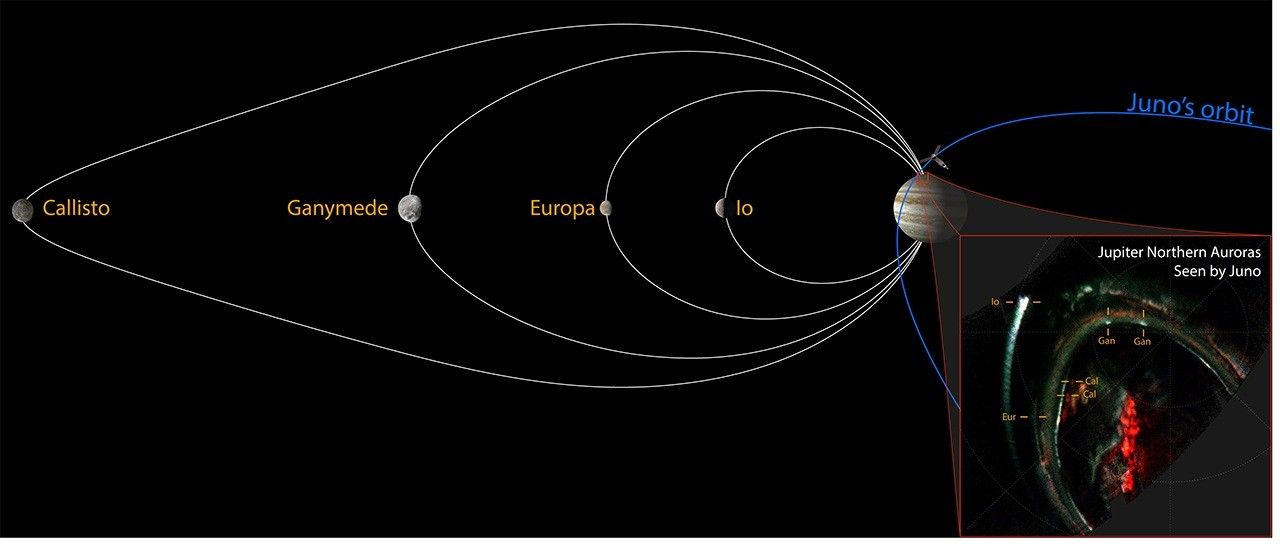Jupiter hosts the brightest and most spectacular auroras in the Solar System. Near its poles, these shimmering lights offer a glimpse into how the planet interacts with the solar wind and moons swept by Jupiter's magnetic field. Unlike Earth's northern lights, the largest moons of Jupiter create their own auroral signatures in the planet's atmosphere - a phenomenon that Earth's Moon does not produce. These moon-induced auroras, known as "satellite footprints," reveal how each moon interacts with its local space environment.

Before NASA's Juno mission, three of Jupiter's four largest moons, known as Galilean moons - Io, Europa, and Ganymede - were shown to produce these distinct auroral signatures. But Callisto, the most distant of the Galilean moons, remained a mystery. Despite multiple attempts using NASA's Hubble Space Telescope, Callisto's footprint had proven elusive, both because it is faint and because it most often lies atop the brighter main auroral oval, the region where auroras are displayed.
NASA's Juno mission, orbiting Jupiter since 2016, offers unprecedented close-up views of these polar light shows. But to image Callisto's footprint, the main auroral oval needs to move aside while the polar region is being imaged. And to bring to bear Juno's arsenal of instruments studying fields and particles, the spacecraft's trajectory must carry it across the magnetic field line linking Callisto and Jupiter.
These two events serendipitously occurred during Juno's 22nd orbit of the giant planet, in September 2019, revealing Callisto's auroral footprint and providing a sample of the particle population, electromagnetic waves, and magnetic fields associated with the interaction.
Jupiter's magnetic field extends far beyond its major moons, carving out a vast region (magnetosphere) enveloped by, and buffeted by, the solar wind streaming from our Sun. Just as solar storms on Earth push the northern lights to more southern latitudes, Jupiter's auroras are also affected by our Sun's activity. In September 2019, a massive, high-density solar stream buffeted Jupiter's magnetosphere, briefly revealing - as the auroral oval moved toward Jupiter's equator - a faint but distinct signature associated with Callisto. This discovery finally confirms that all four Galilean moons leave their mark on Jupiter's atmosphere, and that Callisto's footprints are sustained much like those of its siblings, completing the family portrait of the Galilean moon auroral signatures.
An international team of scientists led by Jonas Rabia of the Institut de Recherche en Astrophysique et Planétologie (IRAP), CNRS, CNES, in Toulouse, France, published their paper on the discovery, "In situ and remote observations of the ultraviolet footprint of the moon Callisto by the Juno spacecraft," in the journal Nature Communications on Sept. 1, 2025.






